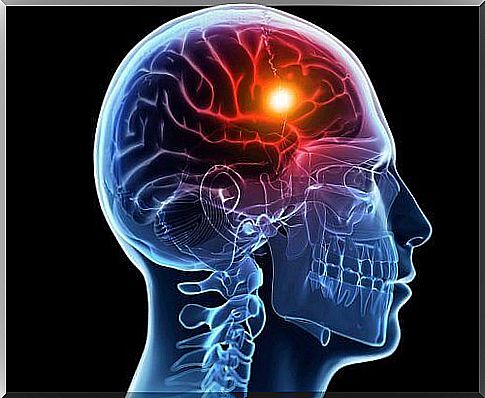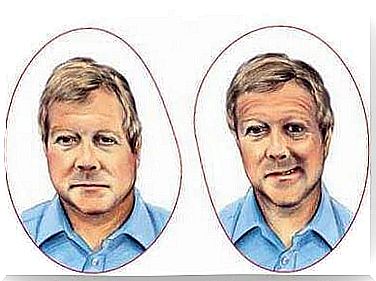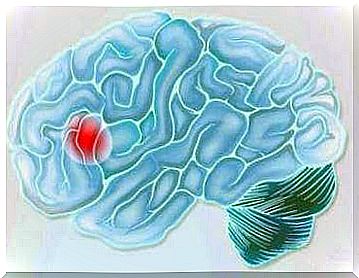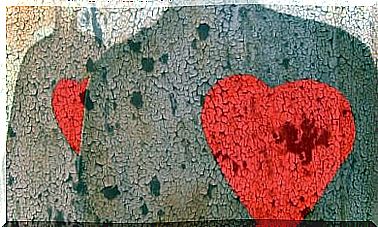What Are The Causes And Types Of Strokes?

Cerebrovascular diseases are the most common cause of neurological problems. They are responsible for 50% of the total of these problems. In addition, it is the third leading cause of death in the world, behind only heart disease and cancer. One of these diseases is stroke, also known by its initials stroke or stroke.
These abnormalities in brain function are caused by pathological processes in the blood vessels and often lead to neurological changes. The brain depends on blood supply, so when there is a blockage or rupture of veins and some region has its blood flow interrupted for a few minutes, neuronal damage occurs. If the situation lengthens, we reach the point of death of neurons with irreparable damage and irreversible symptoms.
How to detect the damage caused by a cerebrovascular pathology?
One of the possible procedures is detection through radiological examinations performed by physicians and neurologists. For example, a CT scan or an MRI can provide a lot of information about the brain structures affected by a stroke.
In addition, it is also important for a psychologist to carry out a neurological investigation. Thus, signs that are not always detected by radiological examinations, such as changes in behavior, can be observed. Both procedures are necessary for a more complete and accurate diagnosis.

Characteristics of strokes
This type of cerebrovascular pathology is formed by a heterogeneous group of disorders in which brain damage occurs due to some vascular issue. Its prevalence has increased in recent decades due to greater precision in detecting cases through neuroimaging techniques. The lifestyle that is lived today also contributes to this increase.
The main risk factors are those that facilitate the process of fat accumulation in blood vessels, its calcification or loss of flexibility. In other words: hypertension, high cholesterol, diabetes and smoking. They are more frequent in people over 60 years old. Stroke causes interruption of blood flow to a part of the brain. This causes lack of oxygen which, if maintained for a certain time, causes damage to the affected area or nearby areas, due to the death of brain tissue.
What are the manifestations of strokes
Stroke symptoms usually present without pain and are usually transient, and therefore often go undiagnosed. There is no pain because the brain has no pain receptors, and they can be transient because the blood flow resumes after a brief interruption. Motor and sensory symptoms usually present on the opposite side of the affected place in the brain. For example, if there is a decrease in blood flow to the right part of the brain, the consequences will usually be observable in the left half of the body.
In addition, strokes also often cause a loss of strength or a feeling of numbness in one half of the body (face, arm, leg…). There may also be a sudden loss of vision, partially or completely in one or both eyes. Another symptom is difficulty speaking and understanding others.

Types of Stroke or Stroke
A stroke causes an interruption in the normal blood flow to the brain. It is what we also call a cerebral infarction, and it can be caused by an obstruction of the veins (the ischemic stroke), or by a hemorrhage (the hemorrhagic stroke). Let’s see the characteristics of each one:
ischemic stroke
The cause of ischemic strokes is the interruption of blood flow due to an obstruction of the blood vessel. A clot circulates through the blood vessels towards the brain and gets stuck somewhere in an artery, causing a blockage. The region irrigated by this vein stops receiving blood, and therefore also stops receiving oxygen, and this causes damage to the non-irrigated region.
The causes of this type of effusion are lack of systemic irrigation, thrombosis or embolism.
- Thrombosis : happens when a blood clot covered by a layer of solidified fat narrows the cerebral blood vessel. It may appear suddenly.
- Embolism : a clot, formed in the heart or by the fragment of a thrombus, breaks off into the bloodstream and blocks an artery at some point in the body.
hemorrhagic stroke
What differentiates this stroke from the previous one is the high mortality rate compared to ischemic strokes. The death rate for patients suffering from this condition is approximately between 30 and 50% in the first month after the occurrence of hemorrhage.
The gravity is greater in this type because the spilled blood also causes damage. In other words, hemorrhage by itself is another factor of damage added to the lack of irrigation that can happen in the nearby region. The cause of a stroke is the rupture of a vein wall, which becomes weak. The mechanisms that cause this disruption of vessels are mainly two: aneurysms and hypertension.
- Aneurysm : is the localized dilation, widening or swelling of a blood vessel that occurs as a result of a congenital fragility of the artery walls. As a result, blood begins to fill the subarachnoid space and, as the skull does not have a flexible volume, intracranial pressure increases and causes severe sequelae.
- Hypertension: Increases the risk of an intracerebral hemorrhage, meaning the blood leaks directly into the brain tissue and starts to damage several areas. The percentage of deaths of this type is 80% and there are risks of coma and vegetative states.

The prevalence of strokes is currently around 3.5% for the population older than 64 years. Between 64 and 74 years of age, there is a greater number of cases among males. From the age of 75, however, the prevalence increases significantly among females.
Bibliography
- Junqué, C. and Barroso, J. (2009). Neuropsychology manual. Madrid: Editorial Synthesis.









